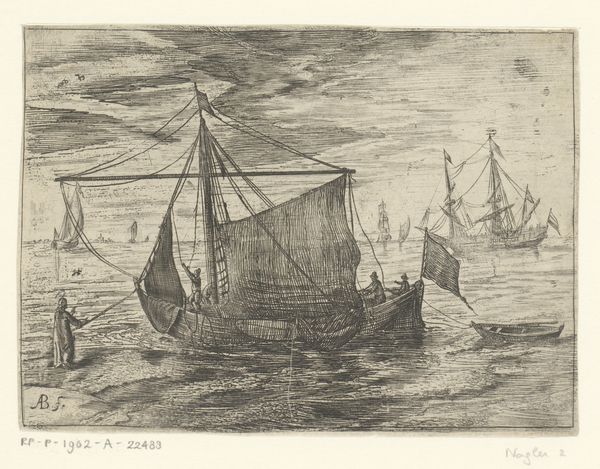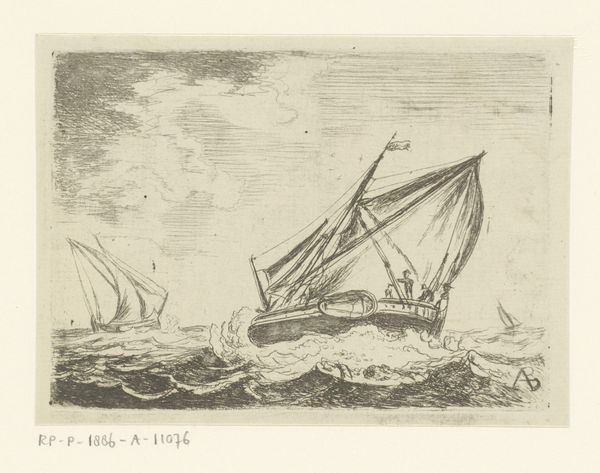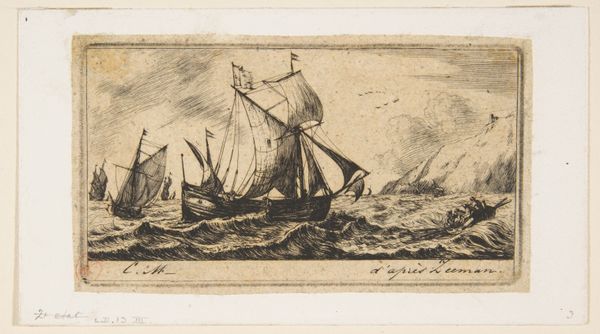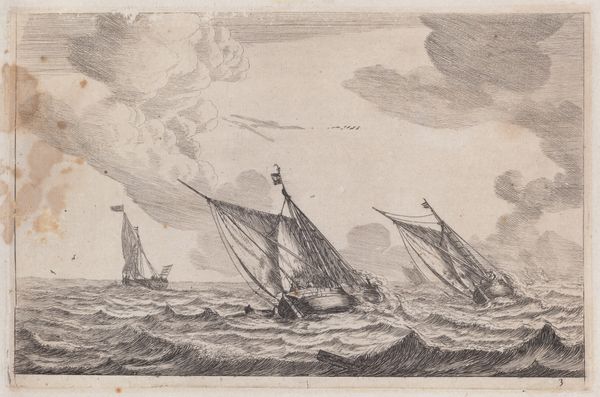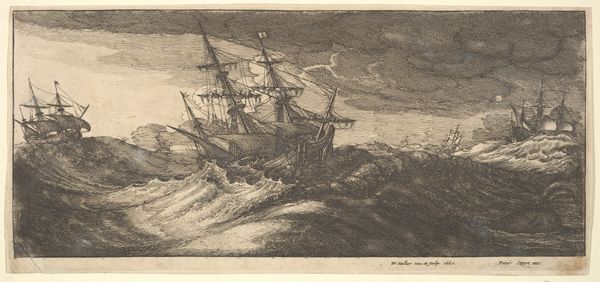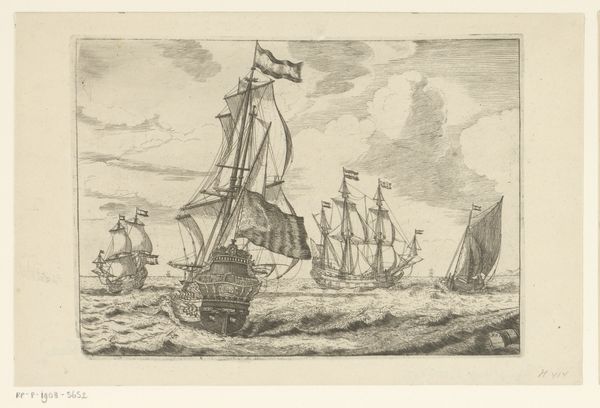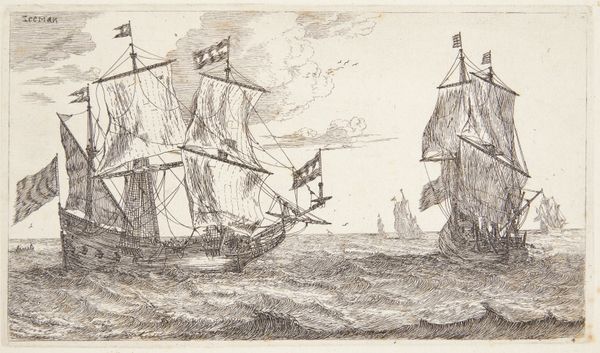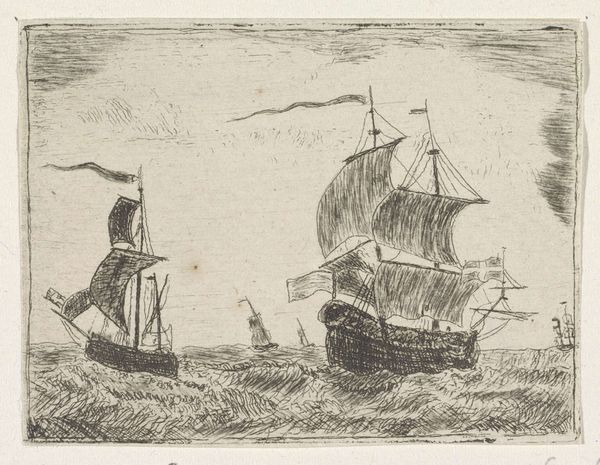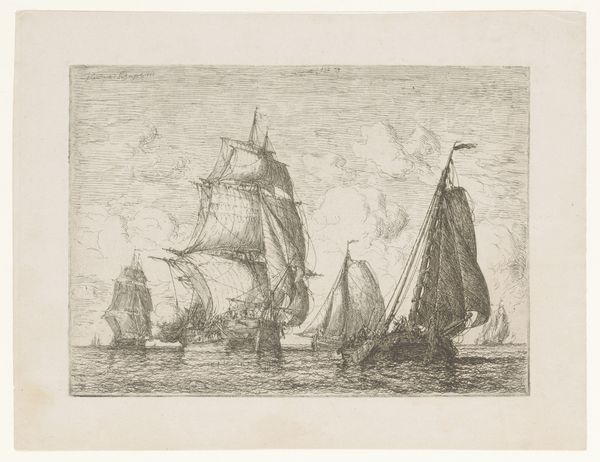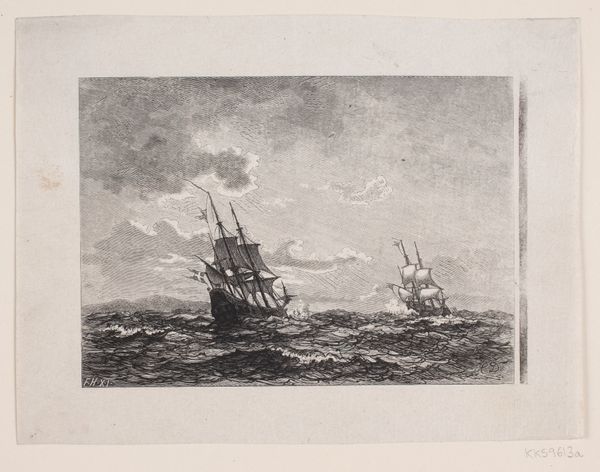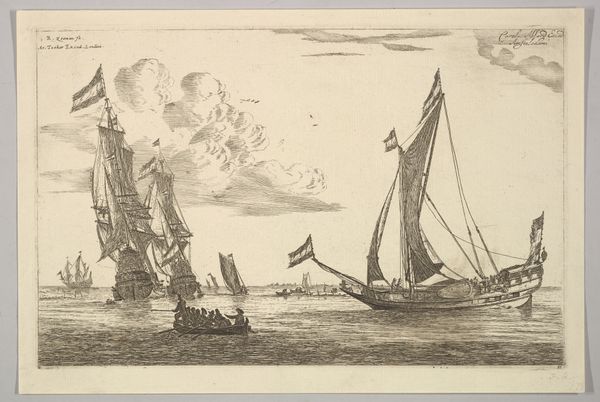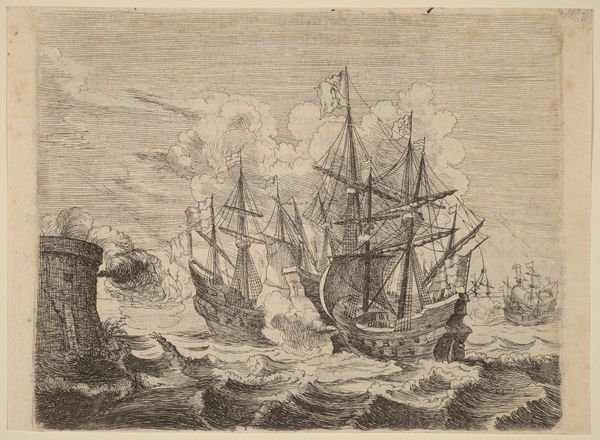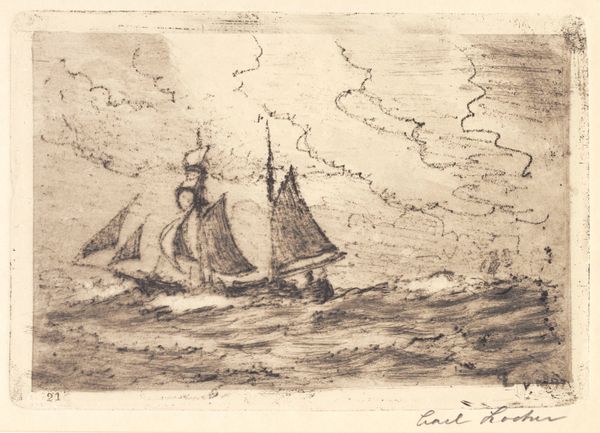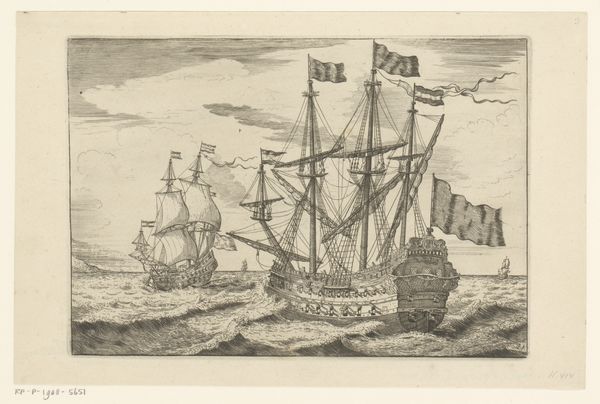
drawing, print, ink, engraving
#
drawing
#
baroque
#
pen drawing
#
dutch-golden-age
# print
#
landscape
#
figuration
#
ink
#
engraving
Dimensions: height 132 mm, width 182 mm
Copyright: Rijks Museum: Open Domain
Curator: Here we have an intriguing maritime scene, "Zeegezicht met zeilschepen en een walvis" or "Seascape with sailing ships and a whale," created sometime between 1650 and 1700 by Monogrammist AB. The medium is engraving in ink. Editor: My immediate reaction is a sense of precariousness. The ships, while stately, appear dwarfed and vulnerable beside the sheer scale of the whale breaching the surface. Curator: Absolutely. Note the artist's masterful use of line to convey depth and texture. The intricate details in the rigging of the ships contrast beautifully with the smooth, curving form of the whale. It speaks to a meticulous observation of natural forms. Editor: I find myself wondering about the Dutch Golden Age context. The image presents an age of exploration, a maritime power, and at the same time, it is in conflict with this uncontrollable natural force. How does this artwork reflect or critique Dutch maritime identity, built on this exploitation? Curator: Interesting point. However, structurally, the positioning of the whale is strategically crucial. Its presence draws the eye through the busy sea, balancing the overall composition, with attention to the tonality of the grays that give depth to the water. Editor: True, yet, considering contemporary debates on whaling, this scene gains further resonance. The whale isn’t just an aesthetic element; it's a symbol of resources, power, and perhaps, the looming ecological consequences of unchecked expansion. Who dictates which beings have control over maritime spaces? Curator: It does present a binary of progress versus nature. However, formally the tension rests in the conflicting visual weights. It’s less about explicit judgement than an acknowledgement of the competing demands, translated to lines, shapes, and form. Editor: Perhaps, yet by examining through a modern lens we see echoes of current environmental dialogues. Even the composition itself embodies an unresolved dynamic, reminding us of the enduring negotiations with our place in the natural world, even now. Curator: A very contemporary conclusion. Thank you for offering a counterpoint that reminds us that, despite the structure, an image can retain its ability to instigate different perspectives and readings across the centuries.
Comments
No comments
Be the first to comment and join the conversation on the ultimate creative platform.
